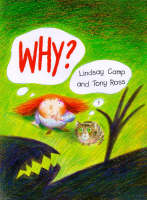 Picture books are frequently requested by teachers and parents as a way to introduce children to scientific concepts. These books are recommended for children aged three to seven.
Picture books are frequently requested by teachers and parents as a way to introduce children to scientific concepts. These books are recommended for children aged three to seven.
Scientific method and observation
-
Why?
Lindsay Camp - Lily’s continual questioning sometimes annoys her father, but one day it proves very useful. It can come in handy to question the world around you.
- Argus Michelle Knudsen
- Sallie’s class is supposed to be raising chicks as a science project, but although Argus, the large, green, scaly creature that hatches from her egg, causes all sorts of trouble she worries about him when he disappears. This title shows students in science class, observing chicks and documenting the results, although the science teacher could stand to be a bit more observant.
- Which is round? Which is bigger? Mineko Mamada
- This deceptively simple concept book prompts the reader to compare pairs of objects and then choose which one has a particular attribute. At first the answer seems obvious until the page is turned to reveal a delightful twist!
-
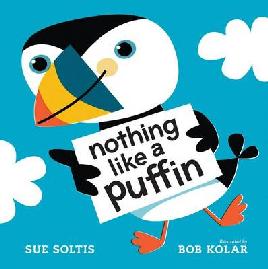 Duck! Rabbit! Amy Krouse Rosenthal
Duck! Rabbit! Amy Krouse Rosenthal - Two unseen narrators argue about whether they are observing a duck or a rabbit. Using visual, aural, and movement cues, they finally understand each other, just as a new object comes into view.
- Nothing like a puffin Sue Soltis
- A narrator sets out to prove that there is nothing like a puffin but discovers that many things, including a newspaper and a helicopter, are a little bit like one and that a penguin is very much like a puffin.
- Surprising silhouettes Connie Tamaddon
- Things aren’t always as they appear in this fun guessing game book. Learn that you need to look carefully before you draw conclusions.
Chemistry
-
The importance of green
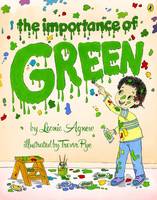 Leonie Agnew
Leonie Agnew - “Liam Loveday could not and would not paint without green.” When Liam’s favourite paint colour runs out, he eventually discovers he can replace it by mixing other colours. This New Zealand title includes a colour wheel and colour mixing suggestions.
- Mrs Wishy-Washy Joy Cowley
- After the cow, the pig and the duck have rolled in the mud Mrs Wishy-Washy puts each in the tub and scrubs them clean. Great to start a discussion about soap and the processes at work when cleaning things.
- Eddie’s kitchen Sarah Garland
- It is Grandad’s birthday and Eddie is helping Mum make a birthday tea — with Lily’s help, of course! Baked apples from their apple tree, eggs from their chickens — soon the table is filled with yummy birthday treats. But what did Lily do with all the carrots? Includes recipes for you to try while you discuss how ingredients combine to make yummy treats.
-
Colours
 PatrickGeorge
PatrickGeorge - What happens when you mix two colours? What do you get if you mix blue and yellow? This book looks at colour and what happens when you play with it. Just flip the acetate to reveal a new colour and a new picture!
- The king’s bubbles Ruth Paul
- King Bill is admiring the bubbles he blows… but is dismayed when they all float away. He demands that they be brought back, so the hapless royal advisors devise all sorts of schemes to try and retain a roomful of bubbles.
- Roadworks Sally Sutton
- Rhyming text follows the construction of a road, including laying concrete. Check out Concrete by Claire Llewellyn for a simple explanation of the chemical processes involved.
Light
- Through the magic mirror Anthony Browne
- A fascinatingly illustrated book about a young boy who steps through a mirror into a world which looks the same but is slightly different. A good starter for a discussion on how a mirror works and how it doesn’t work.
-
Shadow
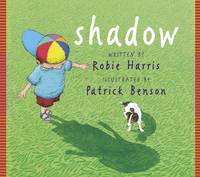 Robie H. Harris
Robie H. Harris - A child discovers their own shadow. What is it? Why does it change size? What happens if you wave, jump or hide behind a tree? And why does it have to go away, just when you start to have fun?
- The game of light Hervé Tullet
- This is a quirky book that is designed to be used in the dark, with a light source, to make designs on the ceiling.
- Oscar and the moth Geoff Waring
- As Oscar the kitten watches the sun set one evening, he has lots of questions about light and dark. Who better than Moth to help out? Moth shows how sources of light are as different as the sun, stars, fireflies, streetlights, and airplanes, and also explains how shadows are made and why darkness comes at night.
Physics
-
 On a beam of light Jennifer Berne
On a beam of light Jennifer Berne - This book follows the life of Albert Einstein, from his early ideas to his groundbreaking theories. It shows how his fascination with science developed through observation of the world.
- I fall down Vicki Cobb
- Simple words and pictures explore why we, and other things, fall down.
- The Little Yellow Digger at the zoo Betty Gilderdale
- The Little Yellow Digger comes to the rescue when the hippo pool at the zoo needs to be made bigger. But when trouble arises, some physical thinking is needed to save the day.
-
Daisy’s wild ride
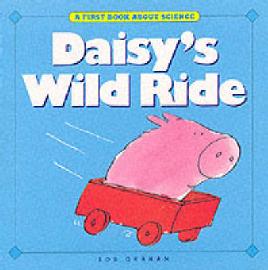 Bob Graham
Bob Graham - In this story Jane learns about motion when she sends her pet pig, Daisy, on a wild cart ride that ends suddenly with a rock and a mud puddle. Check out other books in the A first book about science series.
- The enormous turnip Robert James
- The farmer can’t pull out the enormous turnip alone, but maybe if everybody works together they can!
- Oscar and the cricket Geoff Waring
- When Oscar rolls a big red ball through the grass, he has lots of questions about forces — jumping and dropping, pushing and pulling. Luckily Cricket is nearby and has all the answers! Check out other books in the Oscar series.
Water
-
Once there was a raindrop
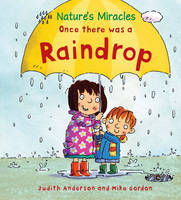 Judith Anderson
Judith Anderson - How do raindrops change as they fall from the clouds and then seem to disappear before appearing as clouds again? It’s one of nature’s miracles! This book tells you the life story of a seed through the eyes of two busy children and their dad.
- Mr Bear Branches and the cloud conundrum Terri-Rose Baynton
- Lintfrey Longfellow would love nothing more than to sit among the clouds… But sadly, clouds just aren’t made for sitting on. Can Mr Bear Branches find a solution to Lintfrey’s cloud conundrum?
- All the water in the world George Ella Lyon
- A beautifully illustrated and laid out poetic introduction to the water cycle for young children.
-
Making a friend
 Alison McGhee
Alison McGhee - When the snow falls, a young boy makes a snowman that becomes his friend, until the seasons change…
- Fluffy, flat, and wet Dana Meachen Rau
- Some clouds are white and fluffy, but others are flat and wet. How do clouds form, and what are they made of? A book in the Amazing Science series.
- Flotsam David Wiesner
- Flotsam: something that floats. If it floats in the ocean, it may wash up on the beach, where someone may find it and be astonished.
Weather and the seasons
-
Leaf jumpers
 Carole Gerber
Carole Gerber - How many shapes and colours can you see in autumn leaves? Jump in and find out!
- All through the year Jane Godwin
- Open this book and travel your way all through the year and treasure each day. The seasons and activities associated with them are shown in this Southern Hemisphere friendly book.
- It’s much too hot Bob Graham
- In this story it’s too hot for Jenny, her dog and even the flowers — but she learns that shade and a garden hose can make the day a little cooler. Check out other books in the A first book about science series.
- The snowy day Ezra Jack Keats
- The adventures of a little city boy on a very snowy day. Can he keep a snowball overnight?
- All around the seasons Barney Saltzberg
- From the first flowers of spring through the lazy days of summer, the brisk chill of autumn, and the shivery anticipation of blustery, snowy holidays, All around the seasons highlights the wonderful things that make each turn in the year unique.
